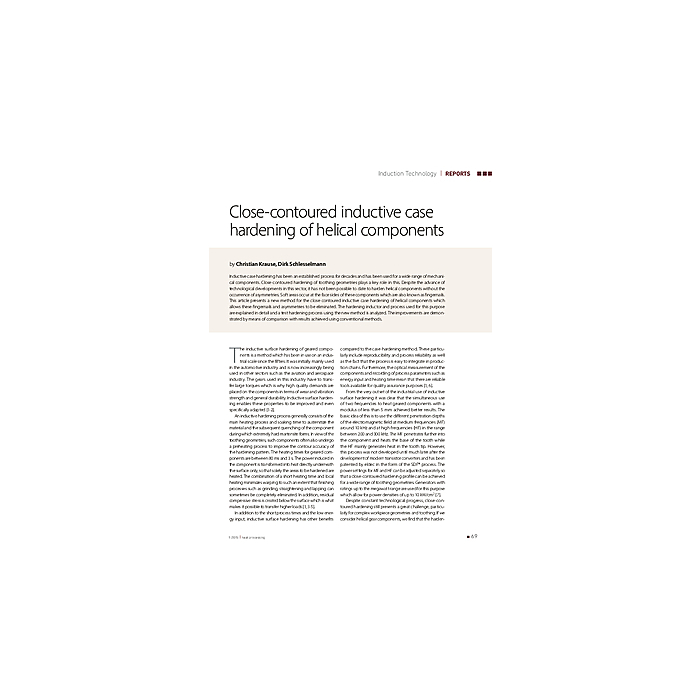Close-contoured inductive case hardening of helical components
4,90 €
Auf Lager
Artikelnummer
00541_2015_01_06
Inductive case hardening has been an established process for decades and has been used for a wide range of mechanical components. Close-contoured hardening of toothing geometries plays a key role in this. Despite the advance of technological developments in this sector, it has not been possible to date to harden helical components without the occurrence of asymmetries. Soft areas occur at the face sides of these components which are also known as fingernails. This article presents a new method for the close-contoured inductive case hardening of helical components which allows these fingernails and asymmetries to be eliminated. The hardening inductor and process used for this purpose are explained in detail and a test hardening process using the new method is analyzed. The improvements are demonstrated by means of comparison with results achieved using conventional methods.
| Autoren | Christian Krause / Dirk Schlesselmann |
|---|---|
| Erscheinungsdatum | 01.01.2015 |
| Format | |
| Zeitschrift | heat processing - Issue 01 2015 |
| Verlag | Vulkan-Verlag GmbH |
| Sprache | English |
| Seitenzahl | 4 |
| Titel | Close-contoured inductive case hardening of helical components |
| Beschreibung | Inductive case hardening has been an established process for decades and has been used for a wide range of mechanical components. Close-contoured hardening of toothing geometries plays a key role in this. Despite the advance of technological developments in this sector, it has not been possible to date to harden helical components without the occurrence of asymmetries. Soft areas occur at the face sides of these components which are also known as fingernails. This article presents a new method for the close-contoured inductive case hardening of helical components which allows these fingernails and asymmetries to be eliminated. The hardening inductor and process used for this purpose are explained in detail and a test hardening process using the new method is analyzed. The improvements are demonstrated by means of comparison with results achieved using conventional methods. |
Eigene Bewertung schreiben


